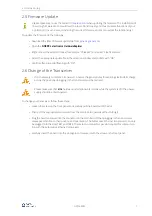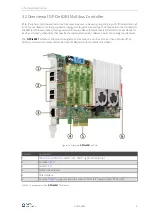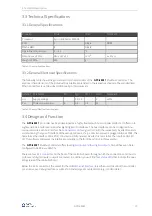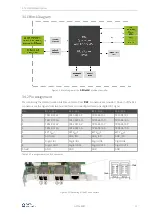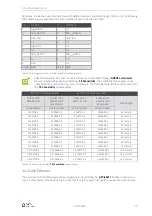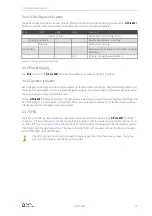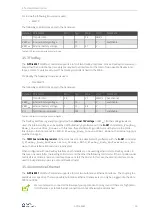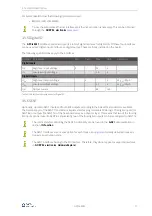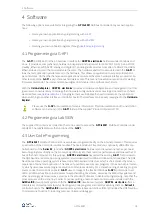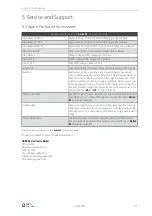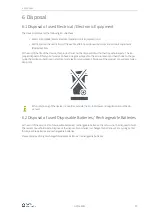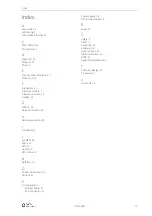
4 Software
G PCIe 6281
19
UserCode programs can be downloaded and debugged directly from the
Net2Run IDE
via an Ethernet connec-
tion.
4.4 Additional Software Interfaces
4.4.1 File System
The software interface "FS" (File System) allows, among others, to create, copy, delete, run, and finding files on
the hardware. It thus provides unified access to the onboard file system.
4.4.2 Sequence
The software interface "Sequence" enables the recording and playback of firmware commands as a command
sequence, in short "Sequence". A sequence can also be stored permanently under any name on the device.
By specifying the name, this sequence can be reloaded and played. The automatic loading of a sequence after
switching on the device allows e.g. starting a CAN command sequence to configure a display (if the sequence
contains the necessary commands).
4.4.3 Net2Run
The software interface "Net2Run" is used to create, configure and execute a residual bus simulation. Several
bus interfaces for CAN, CAN FD, LIN, FlexRay and Ethernet can be simulated simultaneously and coherently. The
Net2Run interface supports the loading and execution of so-called residual bus simulation files (
*.rbs
). These
are preconfigured command sequences that contain a static residual bus simulation. These files are created us-
ing the Net2Run Configurator tool.
Net2Run is divided into several software modules and relies heavily on
AUTOSAR
. There are the software mod-
ules
•
COM
•
PDU Router
•
CAN Interface
•
LIN Interface
•
FlexRay Interface
•
PDU Multiplexer
•
CAN-NM
•
FlexRay-NM
Thus, routing of PDUs from e.g. CAN1 on CAN2, CAN1 on LIN3 or FlexRay2 on CAN4 is possible (PDU-Gateway).
The routing of individual signals can be realized by a COM signal gateway. Several Net2Run interfaces exist so
that several independent residual bus simulations can run on one card (for example one residual bus simulation
on CAN1, CAN2, CAN3, etc.).
4.4.4 UserCode
The software interface "UserCode" allows the execution of self-created on-board programs (see
). Message FIFOs exist for communication between on-board programs and the host. A message FI-
FO can be created, written and read by any side (on-board program or host). Each FIFO can be read and written
from both sides. For consistency, it is recommended to have a separate FIFO for each direction. One side only
writes while the other reads only from a FIFO.



